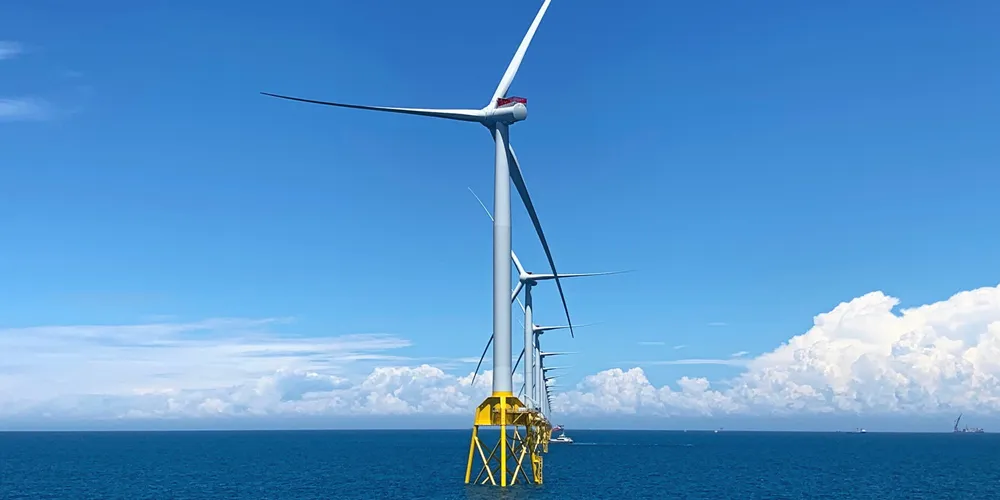'Soap opera' | How Taiwan learned the hard way to soften its wind power demands
Island expands project size and backs off vessel localisation as Asian market grows

Taiwan’s Energy Administration (EA) has floated revised offshore wind regulations that would raise project size and do away with domestic content requirements for scarce vessels, both key concessions to industry demands following a lackluster phase 1 of its 9GW third round solicitation.
“The rules were not well set up before the bid submission deadline and the whole auction process looked like a soap opera,” said Ching Wen Huang, associate director in Taiwan for sustainability consultancy ERM.
Taiwan has awarded 5.6GW of project capacity in its first two rounds and is looking for another 9GW through a series of auctions in the round 3 tender. Each phase will look to award 3GW, for a total 15GW by 2035, with longer term goals of 45-50GW by 2050.
Round 3.1 closed last December, and the next round, 3.2, is expected to open early next year.
The island has 1.5GW of installed offshore wind capacity in operation, including the 376MW Formosa 2, owned by JERA, Macquarie, and Synera Renewable Energy (SRE), and Orsted's 900MW Changhua 1 & 2, according to EA.
Even after project awards were announced, there was widespread speculation that the winners would refuse to sign offtake contracts with state-owned utility Taiwan Power.
In the end, five developers signed contracts, allocating 2.33GW of the 3GW on offer, “better than expected,” said Huang.
Raising the size cap from the current 500MW to 900MW, with an upside flexibility of 100MW, bringing total awards to 1GW, is the key concession made by the EA.
“The government is trying to facilitate wind farm economics by increasing the wind farm capacity for projects,” said Ruth Chen, senior analyst at Westwood Global Energy Group, based in Singapore.
ERM’s Huang noted that industry giants Orsted and Siemens Gamesa were most vocal in arguing against the cap, as both are looking to maintain “their dominate position in Taiwan market by securing more capacity at once”.
Siemens Gamesa protested on multiple occasions that a 500MW order is not enough to justify “more localisation commitment in Taiwan”.
Smaller project awards also lead to fragmentation of wind energy areas, noted Huang.
“It is not good for Taiwan as we are targeting large amount of offshore wind capacity by 2035,” said Huang.
EA revealed its draft proposals for the sector at a hearing 27 September in Taipei, where it also said it was likely to no longer prioritise domestically built sector vessels.
“The government now understands building new vessel is a complicated thing [and] encouraging more new local vessels is not practical,” Huang said.
Westwood’s Chen said this change is controversial as “international shipowners have already invested substantially in Taiwan, increasing local content in their Taiwanese subsidiaries”.
“This change of rules makes these investments redundant, and this uncertainty makes it hard to proceed further,” she added.
Local shipbuilding was always a risky venture, said Chen, adding that locally built ships “may not be as competitive in getting jobs outside Taiwan, making it less economically viable for international shipowners to flag their ships in Taiwan.
“The removal of domestic content rules for ships is a sign of the Taiwanese government conceding on enforcing local content in offshore wind construction vessels,” she said.
The government recognises that a strong base for local content development has already been set and “that there is a limit to strongarming international shipowners into interest in Taiwan”.
The removal of domestic shipbuilding as a local content criterium might position the island to enter more easily regional partnerships with up-and-coming markets Japan and South Korea.
“Taiwan’s domestic content rules for ships should be seen in the context of Asia-Pacific offshore wind centres and their corresponding policies,” said Chen.
This removal of the rules is at this point not finalised until the official Phase 2 rules are issued later, the analysts pointed out.
(Copyright)Taiwan round 3.1 project awards
Project | Developer | Capacity (MW) | Commission date |
Feng Miao | CIP | 500 | 2027 |
Formosa 3 | Corio/TotalEnergies | 600 | 2026 |
Hai Xia phase 2 | Skyborn | 300 | 2026 |
Formosa 4 | SRE | 495 | 2027 |
Huan Yang | EDFR-Taiya | 440 | 2027 |
Total | 2,335 |